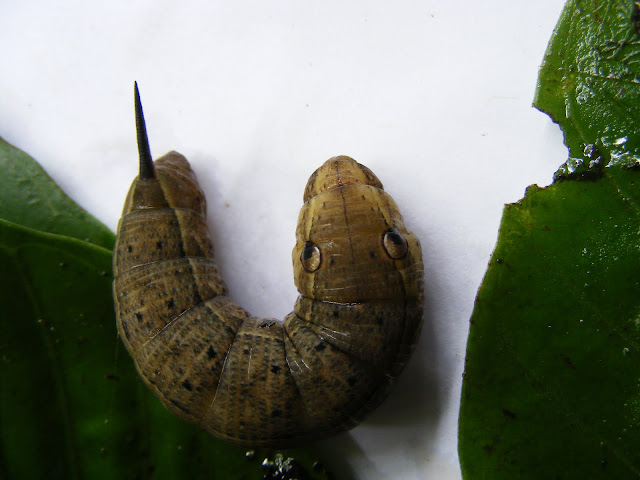Xylophanes sp. 1 (Prepupal)
 |
| Xylophanes libya |
 |
| Xylophanes libya |
The other specimen I saw in Cacao was in its ultimate instar:
Xylophanes sp. 2 (Ultimate Instar)
These eyespots are not overly conspicuous, but probably were in an earlier instar. Once I get a better ID I will try to post shots of the earlier instars for comparison. I have seen caterpillars from this genus pull their head in which helps make the body segments with the spots larger (also making the spots larger) and creates a snake-like head shape (at least to the human observer). I was told that some large caterpillars also do a wiggle behaviour when held which apparently feels like a snake.
Finally, here is a photo of Xylophanes anubus from the ACG caterpillar database. This is in its pre-ultimate instar. Again, many of these species are green at this point and trun brown only as they reach their ultimate instar. My guess is that this colour change has to do with microhabitat use. The earlier green stage probably spends most of its time on or amongst the leaves feeding, while the later brown stage may spend time looking for a good place to pupate. Both green and brown snakes could spell danger for an unlucky bird so both may be effective deterrents. The eyespots do however seem to be more highly contrasting on earlier green instar.
 |
| Xylophanes caterpillar. Pre-ultimate instar. Photo: ACG caterpillar database |









0 comments:
Post a Comment